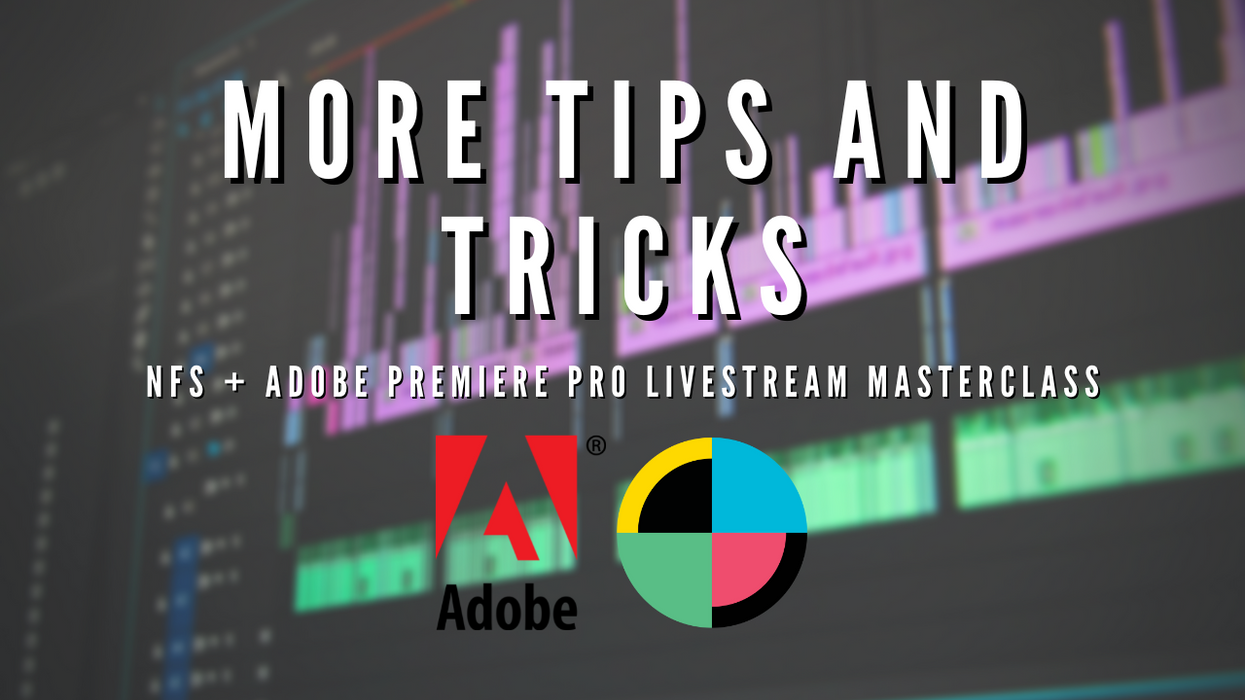Even More Tips and Tricks from the NFS + Adobe Premiere Pro Masterclasses!
In case you haven't heard, No Film School has partnered with Adobe to offer Premiere Pro Masterclasses with Jason Levine.

The NFS + Adobe Premiere Pro Livestream Masterclasses have been offering some very useful nuggets of info when it comes to optimizing post-production workflow. All thanks to Principal Director and Creative Cloud Evangelist for Adobe, Jason Levine.
Adobe is forever changing, and it's important for us editors to stay up-to-date with the latest features, especially in such a content-focused era.
We're reviewing some of the key talking points from the last few lessons and discussing how you can apply them!
The Essentials: Exporting
Exporting in Premiere has changed a lot over the years. There used to be a different menu, and a lot of the specs available today were not accessible. There are still a lot of settings, but they're much easier to decipher these days.
Jason starts us off with the basics. Premiere has made it easy on us by offering pre-set exports such as Vimeo, YouTube, Twitter, Facebook, etc.
You can customize the export to your own settings or choose one of these to quickly get the video developing.
Rendering can also really add up on your export time. Luckily, Jason has a pro tip to cut this waiting time down. He recommends we change our sequence settings and video previews to "Quicktime - Apple ProRes 422 HQ" while beginning editing our projects.
This makes it so the program is already rendering your files while you edit so it doesn't have to do it when you export!
A huge time-saver, for sure.
Audio Basics & Fundamentals
If you're a creator, you understand quality audio is everything! It really makes the difference when trying to achieve professional-level work.
Jason takes us through the audio controls in Premiere. An important panel he demonstrates is the audio levels and dB menu. An important rule to keep in mind is that -96db is the quietest the signal will ever get, whereas 0dB is the loudest and most absolute.
This will help you judge the levels when recording with external equipment. This leads us to Jason's next big point—the benefits of shooting audio digitally.
When you record digitally, you have such a large amount of dynamic range. So if you're shooting something more delicate such as room tone or ASMR, your mic doesn't have to be that hot. You can keep your levels more balanced and get a more crisp sound.
Check out the rest of the lesson for more in-depth audio tips such as these!
Mastering Graphics with the Essential Graphics Panel
Want to make your videos more diverse? Incorporating graphics can be a great way to add some creative pizazz to your project. Jason has a good starting point if you've never touched the graphics in Premiere.
He takes us through creating a legacy title and the tools that come with that. It's all very simple for the most part and is a great way to practice applying new features.
Now, words on the screen are fun, but what if you want more? Jason shows how you can actually important different shapes or an image of your choice onto the project. You can bring in JPEGs, TIFFs, PNGs, etc.
Lastly, credits! You need to have that awesome credit roll at the end of your video, and it's easier to do than you might think.
Once you put all of your text in the graphics, there's actually a "roll" button you can check. This will roll the text down the screen and you can adjust the speed/time accordingly. Check out the timestamp 38:40 for more precise info on where this is.
Now your video should be looking much more fleshed out!
Join Us Live Next Week
Hopefully, these tips helped spark your creative editing mind while saving you time!
The NFS + Adobe Premiere Pro Livestream Masterclasses return next Friday at 10:30 a.m. PST on the No Film School YouTube Channel. If you miss a livestream, we’ll have recordings up on our site and YouTube channel a few days after the stream.













